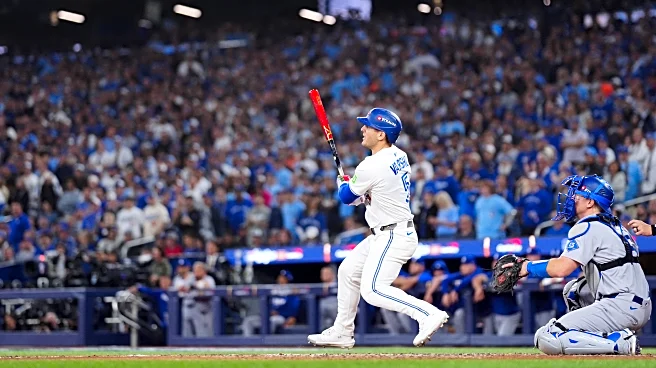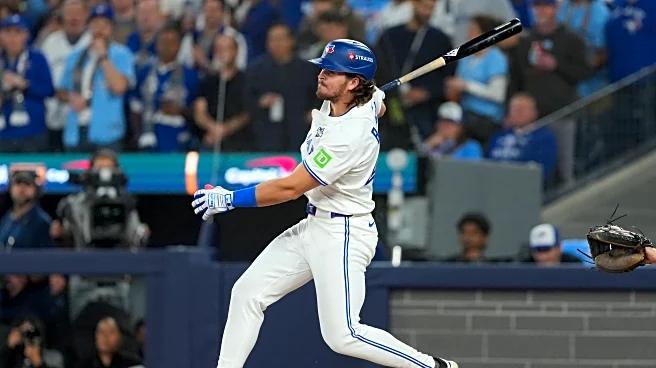What's Happening?
Tony Clark, the executive director of the Major League Baseball Players Association (MLBPA), has reiterated his opposition to the introduction of a salary cap in Major League Baseball. Speaking ahead of the 2025 World Series, Clark emphasized that the issues
within the league can be addressed without implementing a salary cap, which he previously described as 'institutionalized collusion.' The discussion arises as the Los Angeles Dodgers, with a record payroll, reach their second consecutive World Series. Clark dismissed rumors that the Dodgers' financial strategy could influence upcoming labor negotiations, citing historical precedents like the New York Yankees' success from 1998 to 2000. He also noted that all 30 MLB teams have the resources to field competitive teams, though some choose not to invest in excellence. The MLBPA is preparing for potential labor disputes as the current collective bargaining agreement is set to expire after the 2026 season.
Why It's Important?
The debate over a salary cap in MLB is significant as it touches on the broader issues of financial equity and competitive balance within the league. A salary cap could potentially limit the spending power of wealthier teams like the Dodgers, aiming to level the playing field for smaller market teams. However, the MLBPA's resistance highlights concerns over player earnings and the potential for reduced salaries. The outcome of this debate could impact team strategies, player contracts, and the overall financial structure of the league. The ongoing discussions are crucial for stakeholders, including team owners, players, and fans, as they navigate the complexities of maintaining competitive integrity while ensuring fair compensation for players.
What's Next?
As the MLBPA and league officials prepare for the expiration of the current collective bargaining agreement in 2026, negotiations are expected to intensify. The potential for a lockout looms if an agreement cannot be reached. Stakeholders will closely monitor the league's stance on the salary cap and other financial regulations. The outcome of these negotiations could set a precedent for future labor relations in professional sports, influencing how leagues balance financial constraints with competitive fairness.














